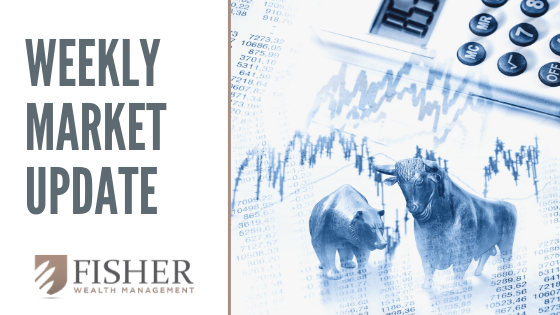
Putting The Bull In Perspective
The S&P 500 Index has closed higher five consecutive weeks, making six new all-time highs along the way. There now have been 19 new highs in 2019, tying the number we saw last year.
There’s no doubt that this bull market has been incredibly impressive, especially lately. But, it may also be quite misunderstood.
For instance, this bull market has been helped by two large pullbacks along the way. There have been two separate 19% plus corrections for the S&P 500 over the past 10 years, in October 2011 and in December 2018. While the selloffs were swift and deep, the S&P 500 didn’t fall more than 20% on a closing basis (the classic definition of a “bear market”). One more bad day last December, though, and we would be saying this bull market is less than a year old. That’s quite a different look than where we are now.
“Many consider this bull market the greatest ever, given it has incredibly lasted more than 10 years,” explained LPL Financial Senior Market Strategist Ryan Detrick. “But in terms of magnitude, many would be surprised to hear that the 357% gain during this bull market is still beneath the record 417% gain seen during the 1990s.”
This bull market also isn’t the strongest in history in terms of gains, even though it has lasted longer than any other bull market, as shown in the LPL Chart of the Day. On an annualized return basis, this bull market has gained 15.3%, which is actually weaker than the average bull market annualized gain of 18.9%.

Last decade (from 2000-2009) was especially bad for stocks. It was the first decade ever in which the S&P 500 fell into two separate 50% bear market declines, along with making only 13 new highs the full decade. We’re not surprised to see explosive gains and new highs this decade (2010-2019) given how bad last decade was for stocks.
IMPORTANT DISCLOSURES
The opinions voiced in this material are for general information only and are not intended to provide specific advice or recommendations for any individual security. To determine which investment(s) may be appropriate for you, consult your financial advisor prior to investing. The economic forecasts set forth in this material may not develop as predicted.
All indexes are unmanaged and cannot be invested into directly. Unmanaged index returns do not reflect fees, expenses, or sales charges. Index performance is not indicative of the performance of any investment. All performance referenced is historical and is no guarantee of future results.
Investing involves risks including possible loss of principal. No investment strategy or risk management technique can guarantee return or eliminate risk in all market environments.
This Research material was prepared by LPL Financial, LLC.
Securities and advisory services offered through LPL Financial (LPL), a registered investment advisor and broker-dealer (Member FINRA/SIPC). Insurance products are offered through LPL or its licensed affiliates. To the extent you are receiving investment advice from a separately registered independent investment advisor, please note that LPL is not an affiliate of and makes no representation with respect to such entity.
If your advisor is located at a bank or credit union, please note that the bank/credit union is not registered as a broker-dealer or investment advisor. Registered representatives of LPL may also be employees of the bank/credit union. These products and services are being offered through LPL or its affiliates, which are separate entities from, and not affiliates of, the bank/credit union. Securities and insurance offered through LPL or its affiliates are:
| Not FDIC or NCUA/NCUSIF Insured | No Bank or Credit Union Guarantee | May Lose Value | Not Guaranteed by Any Government Agency | Not a Bank/Credit Union Deposit |
For Public Use | Tracking #1-915827